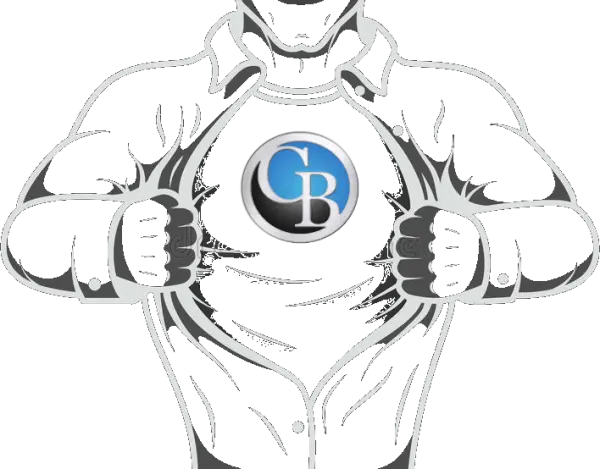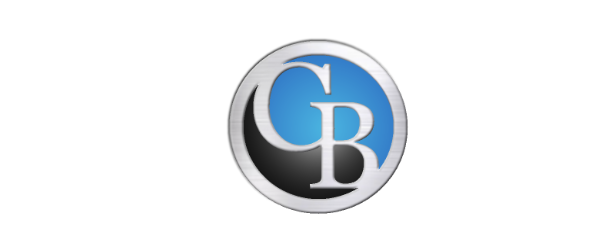Own Yourself - You Are Your Brand
What’s in a Name?
The crux of this article centers around personal branding in the field of tech. Whether it’s work, play or social, having an online persona has become the new normal. Online personas have grown from bleeding-edge gamers, content creators, vloggers and bloggers - to traditional soccer moms with recipe groups. The internet continues to connect everyone and as online trust and validation become more societially valuable, so too does the way you present yourself.
If this seems obvious or common sense, you may not be the target audience for this post.
Working (or playing) in technology often provides early exposure to the future.
Any sufficiently advanced technology is indistinguishable from magic.
- Arthur C. Clarke’s 3rd Law
In some cases, it’s bleeding-edge technology that eventually reaches mass adoption. In others, it may be online communities (social platforms, gaming rooms, etc). My purpose here is to illustrate (no pun intended) some simple ways to capitalize on being ahead of the times by doing a few simple things that future you may thank present you for.
What are some components of a personal online brand and how can you start to build your own?
There are several small pieces that when assembled can help you create a strong brand identity. They’re all related (more on this later), but they can be done separately and on your own timeline. Eventually, the sum of these parts become greater than the whole - as you create and build things.
The basic components are things like:
- A Name, Nick/Handle or Domain
- Theme - 3 colors (primary, secondary and tertiary)
- A Logo
- A consistent appearance
- An Avatar
They’re mostly self explanatory, but let’s explore them anyway.
A Name, Nick, Handle or Domain
Obviously, for my personal brand I use my name Chris Bergeron. It’s also this very apex domain: chrisbergeron.com
For many people, using your name may not be an option. Creativity can really be an asset here if you have a very common or conventional name. A play on words, adding some whimsey, or using a pseudonm are all perfectly acceptable. It’s yours, so express yourself as you wish or wish to be received.
A Logo
A logo is strictly a visual cue or stamp that creates an association with between your name and your content. It can be as simple as initials or as complex as a thoughtfully designed information transfer icon. I don’t have any useful expertise here, but I did create my own CB brand logo using Affinity Photo.
Theme
Colors, palettes, and fonts oh my! I’m no expert when it comes to design, but I know what I personally find appealing. I use Paletter 4, which is a theme generator and color picker. There’s also a free Lite version available.
There are a few factors aside from visual appeal that apply when selecting a color theme. Believe it or not, one of these is Search Engine Optimization or SEO. This matters if you’re serving a website or pages.
An Avatar and/or Skins
The etymology of avatar stems from Hinduism, but modern day definitions of an avatar (noun) is:
av·a·tar | \ ˈa-və-ˌtär \
- An embodiment or manifestation, as of a quality or concept.
- A temporary manifestation or aspect of a continuing entity.
In 2022, I’m not sure which entity will have more persistence - a human or an online avatar. Either way, as an embodiment of our meatspace selves, an avatar is whatever you want to represent you. I used a photo, removed the background and applied a pixelate filter. This gives it an 8-bit appearance. Without diving too deep, 8-bits aligns with my gaming age memories and I think younger gamer me would appreciate it (if gamer me persisted).
I’m not a gamer these days so I can’t offer anything insightful about creating character skins, mounts or similar, but please feel free to comment below if you have advice to offer.
Why Bother?
You may be wondering “What is the value of creating your own personal brand identity?”
It’s fun. At least it was for me. I’m a great engineer and futurist, but I knew very little about marketing and promotion. I dabbled with Photo and Illustrator apps but I didn’t develop anything more than basic proficiency. I enjoy learning and being hands on with graphics tools gave me a deeper understanding.
Trust - It keeps you honest. You’re likely already an honest person, but the accountability keeps your integrity at the forefront of your decision-making.
You can fortify or establish yourself as a subject matter expert in your particular domain(s). For me, a great example of this is Jeff Geerling (geerlinguy). Anytime I see an article reference with certain keywords (often Raspberry Pi related), I can almost predict before clicking that it’s one of Jeff’s posts or videos.
It provides you with a new perspective on what you do, create, make or build. It enables you to externalize yourself and your work products and think through perception. Perception is incredibly important. It’s everywhere - in personal, professional, and recreational life.
It has the potential to raise the quality of what you do by developing your sense of personal pride.
It humanizes your content and makes you approachable. I’m not authoritative on the subject of branding or marketing. This content was created based on my experience with the subject matter hereto. If I’ve erred, please let me know.
It’s Low effort, High value. Value is a relative term. I find value in doing something once and being able to re-use it in multiple ways/places. For example, creating your personal logo / avatar / whatever, gives you a visual watermark that can then be used in other places. All over the pictures on this blog you’ll find my CB brand logo stamped on photos or screenshots I’ve taken. It’s one image, but it can be used in multiple places. It creates a symbolic link (disambiguation from *nix file descriptors) between disparate places that your content or work may appear.
Accountability and Self-governance. Creating a brand identity helps to keeps you honest. You’re likely already an honest person, but the accountability keeps your integrity at the forefront of your decision-making.
Oh the things you can learn! Some you may care about, some you may not. Either way, you’ll probably learn a few things that will make you more well-rounded.
Additionally, you may just be refining skills you may already have. For example, lets say you’re proficient with Affinity Photo or Affinity Designer / Illustrator. By working on your own logo, on your time and for your own enjoyment, you may end up learning tricks or tweaks that you may not have otherwise. A level of enthusiasm can develop that might result in being beter at something than you were before.There’s also the SEO / Marketing aspect. If you’re a content creator, and these days who isn’t - it can help you with name recognition and getting traffic. Self promotion doesn’t have to be shameless. If you’ve created something useful, why not help the world find it?
Where is this stuff useful?
I’ve already covered why you might want to start building your own personal brand. Now where and how should you apply it?
The easy answer is anywhere and everywhere appropriate. Here a few places I use mine:
- Personal Blog
- Github Profile
- My MagicMirror
- Professional Resources
- Resume or C.V.
- Consulting / Side work
- Work Portals
- E-mail Newletters (opt in)
- Social Platforms
- HN
- Stack Overflow
- Wallpaper or backgrounds
- My Streamdeck
In addition to my personal use cases, there are numerous other appropriate venues - both online and in meatspace. Some examples include:
- Trade shows
- Conferences
- Meetups
- School Networks
- Badges, Hats, Clothing
- Stationery - business cards, envelopes, letterheads
Challenges
Depending on what you do, how you conduct yourself or the online communities you visit, my advice here may not apply at all. It’s not uncommon to have several online persona’s for privacy or other reasons. If you do public sector or clearance work, you may not have an online presence at all (which in itself is a red flag to adversaries these days).
The notable challenges around creating a personal brand identity are:
Conflict of Interest - Spiritual, Political or Personal views can often be divisive.
Professional Codes of Conduct - Professional and Work constraints exist for a reason.
HotComaGirl113might be a fun pseudonym for a movie persona, but it’s probably not the best idea for work.Confidentiality - If you’re a working professional, you may not be able to publicly share some of the best work you’ve done. Discretion is the btter part of valor.
Domain Isolation - Keeping separate worlds separate. We exist in many online realms. Knowing where they shouldn’t overlap is mostly common sense, but if you’re unsure, err on the side of caution.
Brand damage is a thing. On the upside, it keeps you accountable for yourself and your work product.
Availability - Trying to come up with an online brand identity can require creativity. First-mover has an advantage here, but even high profile brands like
Ninjamay not snipe their nick on the next big technology disruptor like Twitter.
Summary, tl; dr
Creating a personal brand can start with just a few simple things - a name, a logo, colors, and/or an avatar. They should reflect your personal style or how you see yourself. They can evolve and change, so don’t be paralyzed by perfection on the first cut. As your content, creations, work products evolve, so too can your self presentation. The key is to apply them consistently, thoughfully and creatively.
Questions, Counterpoints, etc
Do I really need all this crap to build a good online brand identity?
Nope. It depends on what you value, what your motivations are and what your goals are - if any. Some of the most successful people I know only have 3 text initials as their brand. It really all depends on your domain (disambuigation from internet apex domain name) and where you lurk, contribute or socalize online.
As for the rest of it, pick and choose what works for you.
Creating a personal brand is pretentious, self-absorbed and narcissistic
It can be percieved that way, sure. I mean, it is some if not all of that. Ultimately though, it can also be received as a strong trust signal. You’re literally putting yourself out there as your own agency. It’s very freeing, while simultaneously forcing you to keep your own integrity at the forefront of your decision-making. Taking an external view of what your deliverables are - what you create, command, conquer, deliver, produce or build - provides a vantage point that makes your achievements larger than yourself. Without getting into too much existential hippy shit1, in a weird way it makes you accountable for yourself in a new way.
Your persona does not have to align with the real you, but being genuine is certainly a healthy way to live. It foments trust and can build or bridge relationships that may not exist otherwise.
It could backfire …
Of course it could. Don’t do shady shit. Seriously, life has a tendency to give back what you give. Call it Kharma, payback, whatever. Mind your manners, conduct yourself appropriately and you as your personal brand can thrive.
Do Only Good Everyday.
1 I’m a hippy.
Own Yourself - You Are Your Brand
https://chrisbergeron.com/2022/05/29/Own-Yourself-You-Are-Your-Brand/






